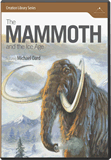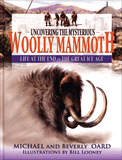Resurrected Mammoth Hemoglobin Protein
ScienceNOW: “Scientists Resurrect Mammoth Hemoglobin” Scientists have resurrected a mammoth—a mammoth hemoglobin protein, that is.
“It’s no different from going back 40,000 years and taking a blood sample from a living mammoth.”
Although the feat sounds less dramatic than bringing a woolly mammoth to life, the scientists’ accomplishment was no easy task. A multinational team recovered DNA from a mammoth bone preserved in Siberia, then isolated the specific gene that would have coded for hemoglobin. Finally, the team inserted the gene into E. coli bacteria, letting the microbes rebuild mammoth hemoglobin according to the DNA “blueprint.”
“It’s no different from going back 40,000 years and taking a blood sample from a living mammoth,” argued University of Manitoba biologist Kevin Campbell, one of the scientists. (The team believes the mammoth bone that contained the DNA to be more than 40,000 years old.) By examining the working of the mammoth hemoglobin and comparing it to that of elephants, the team concluded that mammoth hemoglobin released oxygen efficiently without respect to temperature—quite unique relative to elephant (and human) hemoglobin.
According to the researchers, mammoths’ temperature-neutral hemoglobin allowed it to adapt to cold temperatures in the climatic extremes where mammoth remains are often found. More specifically, the hemoglobin would have enabled mammoths to let their extremities cool (to preserve core body heat) without reducing oxygen flow.
While ScienceNOW quotes one scientist who is cautious about the team’s conclusions, and while we should always think critically, the team’s research certainly represents a cutting-edge and inspiring way to study extinct creatures. While there’s a lot to learn about mammoths (including much we may never know), this discovery reminds us that God programmed incredible cellular information into the original created kinds. This information allowed organisms not only to perform complicated biological tasks, but also to adapt to a wide range of environments—including the Ice Age after the global Flood.
For more information:
- Why live in Siberia?
- Are mammoths still alive?
- Get Answers: Design, Genetics, Ice Age, Mammoths
Remember, if you see a news story that might merit some attention, let us know about it! (Note: if the story originates from the Associated Press, Fox News, MSNBC, the New York Times, or another major national media outlet, we will most likely have already heard about it.) And thanks to all of our readers who have submitted great news tips to us.
(Please note that links will take you directly to the source. Answers in Genesis is not responsible for content on the websites to which we refer. For more information, please see our Privacy Policy.)
Recommended Resources

Answers in Genesis is an apologetics ministry, dedicated to helping Christians defend their faith and proclaim the good news of Jesus Christ.
- Customer Service 800.778.3390
- © 2024 Answers in Genesis







